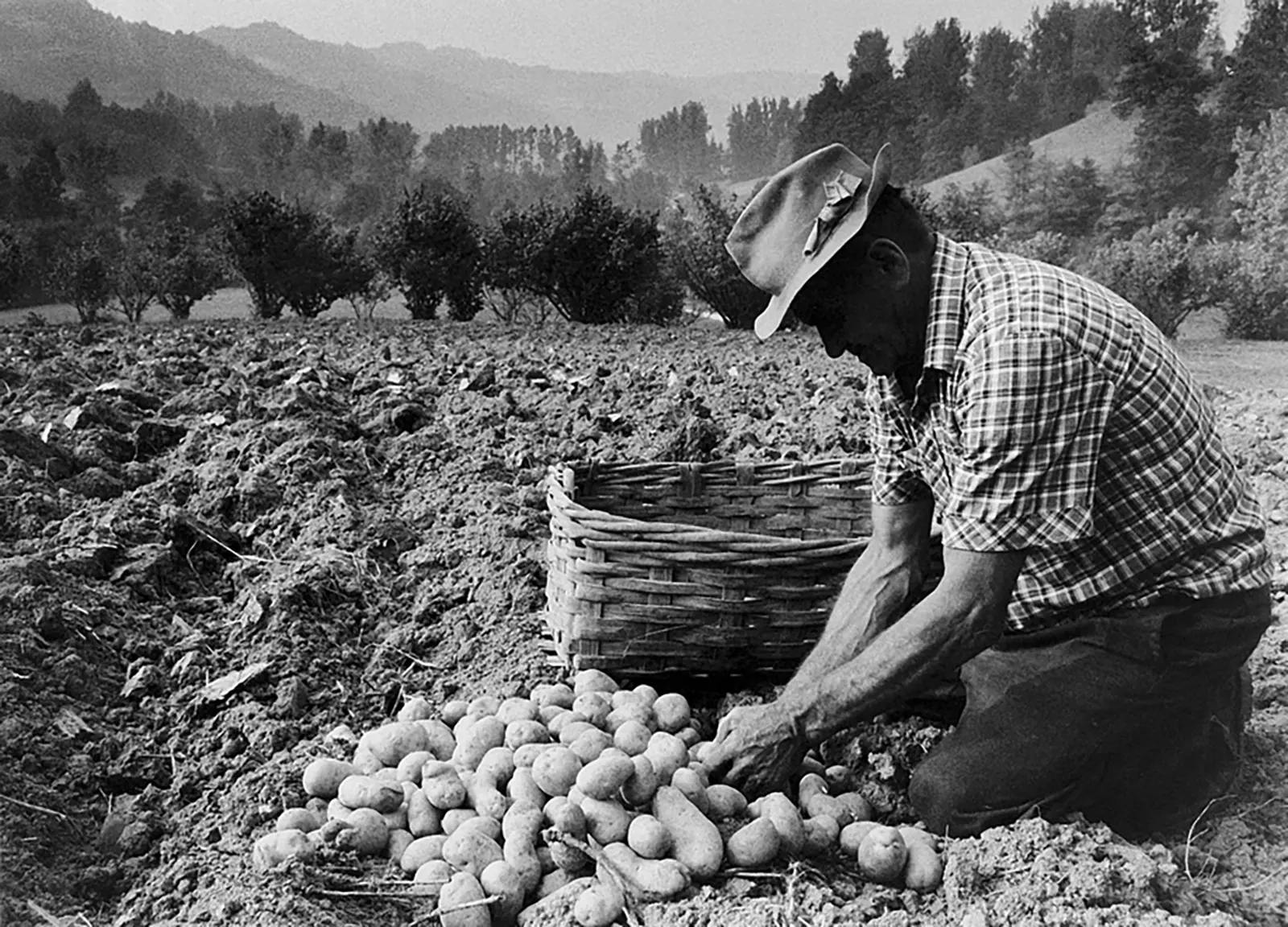Tasty reads
Autumn in the Langhe History of food in peasant resilience

The farmyards overrun with hazelnuts. The vats filled with fermenting must. The garden overflowing with squash, leeks, thistles. The fig-scented orchards and, among the leaves beginning to fall, the unmistakable orange patches of ripe persimmons. In the countryside, everything happens in the fall, all at once.
The season that the burghers cloaked in mists, boredom and sadness was (and still is) the most hectic of the year in the Langa hills. Autumn is augere in ancient Latin etymology: meaning “to increase,” “to enrich.”
The time of year when every summer effort came to fruition, every fruit indulged at the peak of ripeness, and every prayer for harvest turned into survival (or hardship) for the pressing winter.
Announcing autumn was the veraison of the grapes, the change in their color. From green to golden yellow for white varieties such as Arneis and Favorita, the first to be harvested in September.
From yellow to blue for Barbera, Dolcetto and Nebbiolo whose harvest could proceed even in late November, amid the mists complicit in its slow ripening and its very name.
Then all the work was focused on preparing for the harvest, organizing the men and women for the harvest, the logistics of transporting the grapes to the markets, the cursing about bad weather.
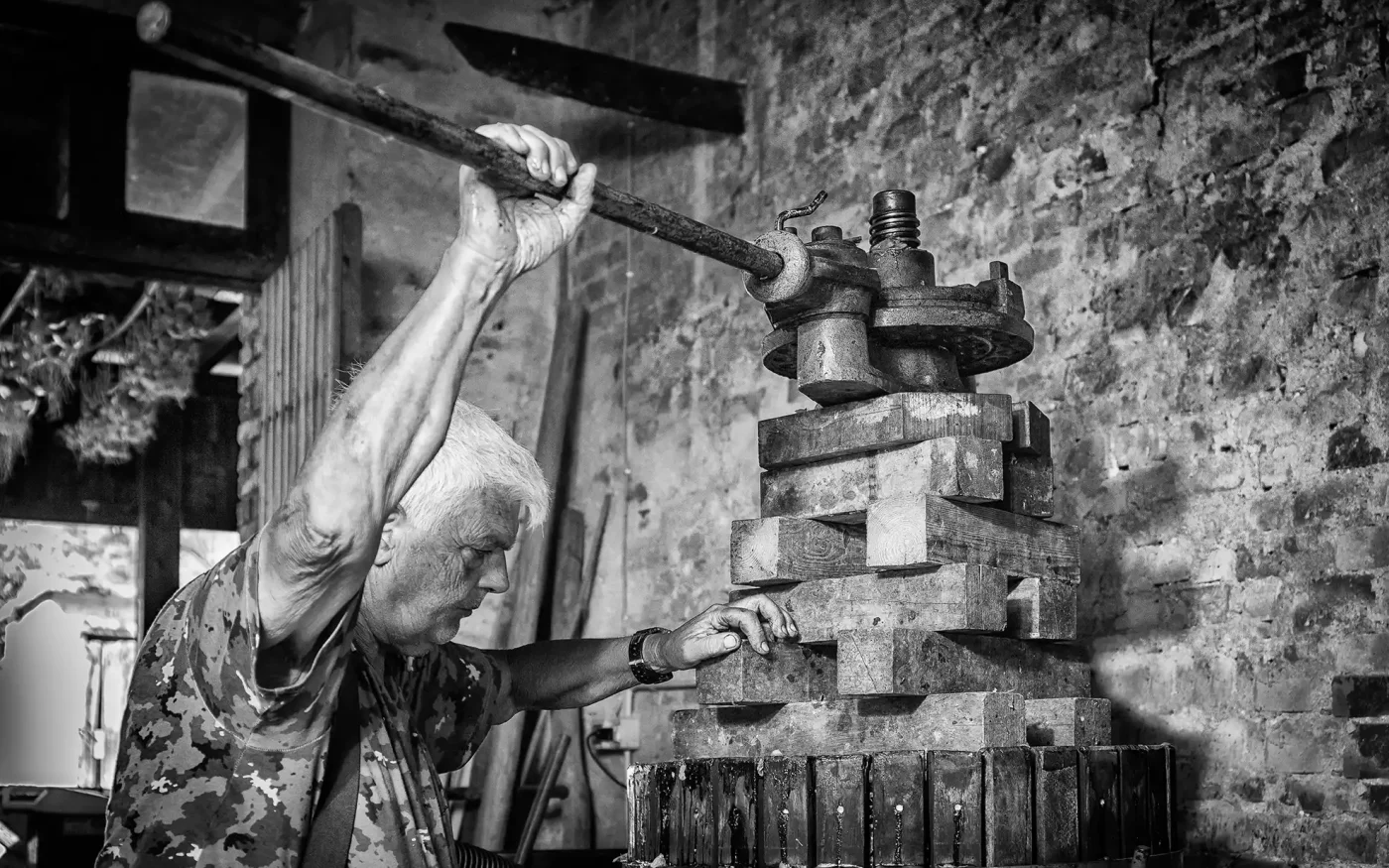
Well beyond the postwar period, most farmers did not produce wine but conferred to large city wineries or social cooperatives. It was there that the crushing, racking, and long aging took place; that workers swarmed night and day to turn grapes into must.
And it was from the backyards of the large farms that the middlemen decided the prices at which they would buy the grapes, establishing, more or less consciously, the happiness or misery of peasant families.
In the countryside, people gave away everything that could be sold fresh and kept just what they needed for the winter. Any excess was turned into preserves, jams, sausages.
After the grapes were the hazelnuts to be laid out on the threshing floor; after the hazelnuts , the chestnuts; after the chestnuts, the search for truffles and after the truffles-when winter began-the slaughtering of pigs.
A continuous flow of work that could only be interrupted by the collective moments of the feast, in which the time of the sacred had the upper hand even over fatigue.
The most famous was St. Martin’s Day, November 11. It marked the conventional end of autumn, the expected pause from work in the countryside(San Martin ël most a l’é vin, “on St. Martin the must becomes wine”).
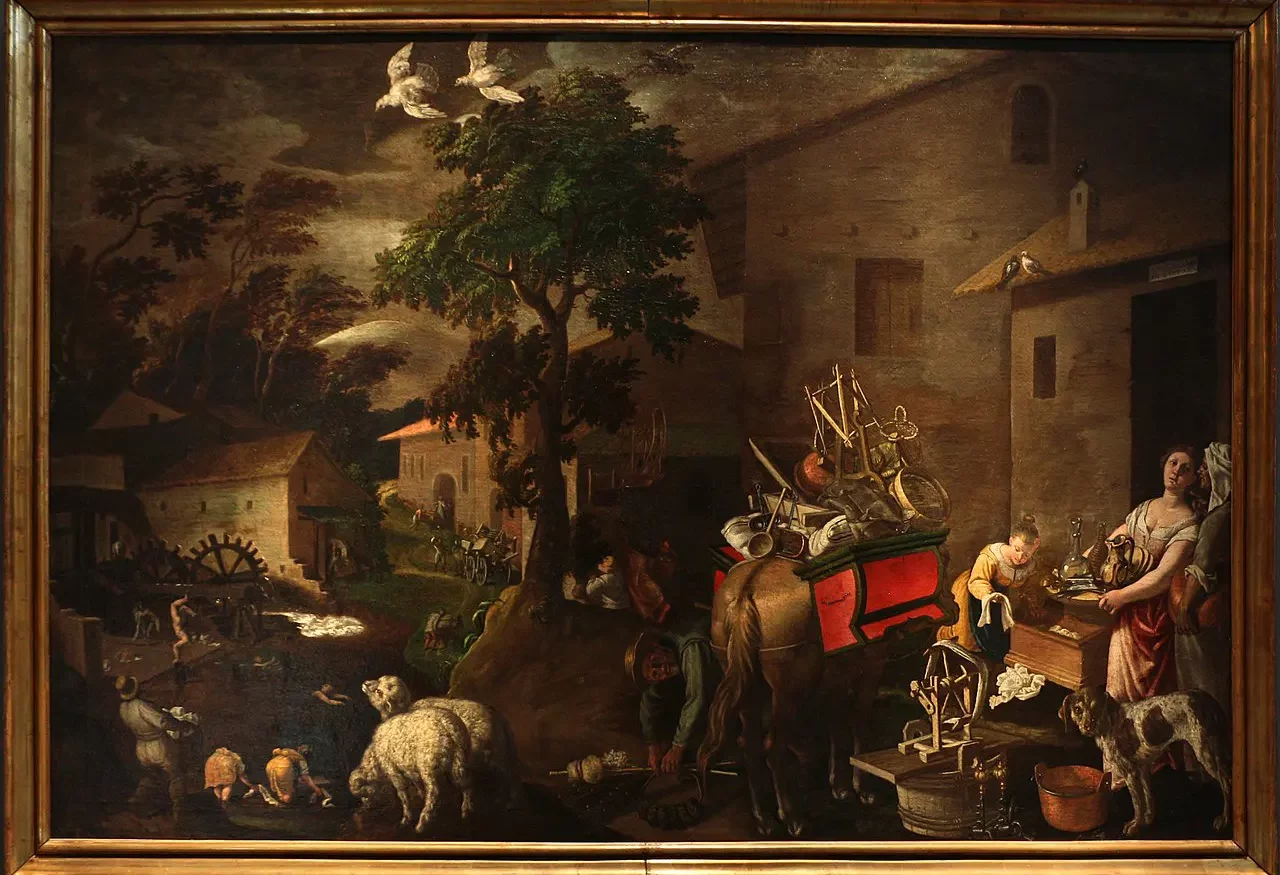
And at the same time it sanctioned the legal termination of contracts between masters and sharecroppers. Had they been renewed, the farmers would have remained where they were, ready for a new season. Otherwise, they would have packed up their belongings in search of a new master(fé San Martin really meant “move out”).
Whether one stayed or left, autumn kept its rites of passage intact, symbolized by transhumance. From village to village, farmstead to farmstead, the flocks and herds returned from the mountains to the plains to face the winter, the hibernation.
So humans, having gone through the exuberance of summer and the abundance of autumn, had to learn to conserve the year’s efforts, using all their energy to give birth to products and traditions that could withstand nature’s forced pause.
There is no wine without autumn, but there could be an autumn without wine. Eventuality that, in the Langhe, would have meant the blackest of famines, the darkest of prophecies.
There is no wine without autumn, but there could be an autumn without wine
Since the late 1800s, the radical specialization of these hills on wine has created an inseparable link to people’s lives and livelihoods. The sale of wine grapes was the major source of income for farming families, who concentrated all their efforts and prayers into the successful harvest.
A collective and participatory effort in which everyone was involved because everyone was more or less touched by its outcome.
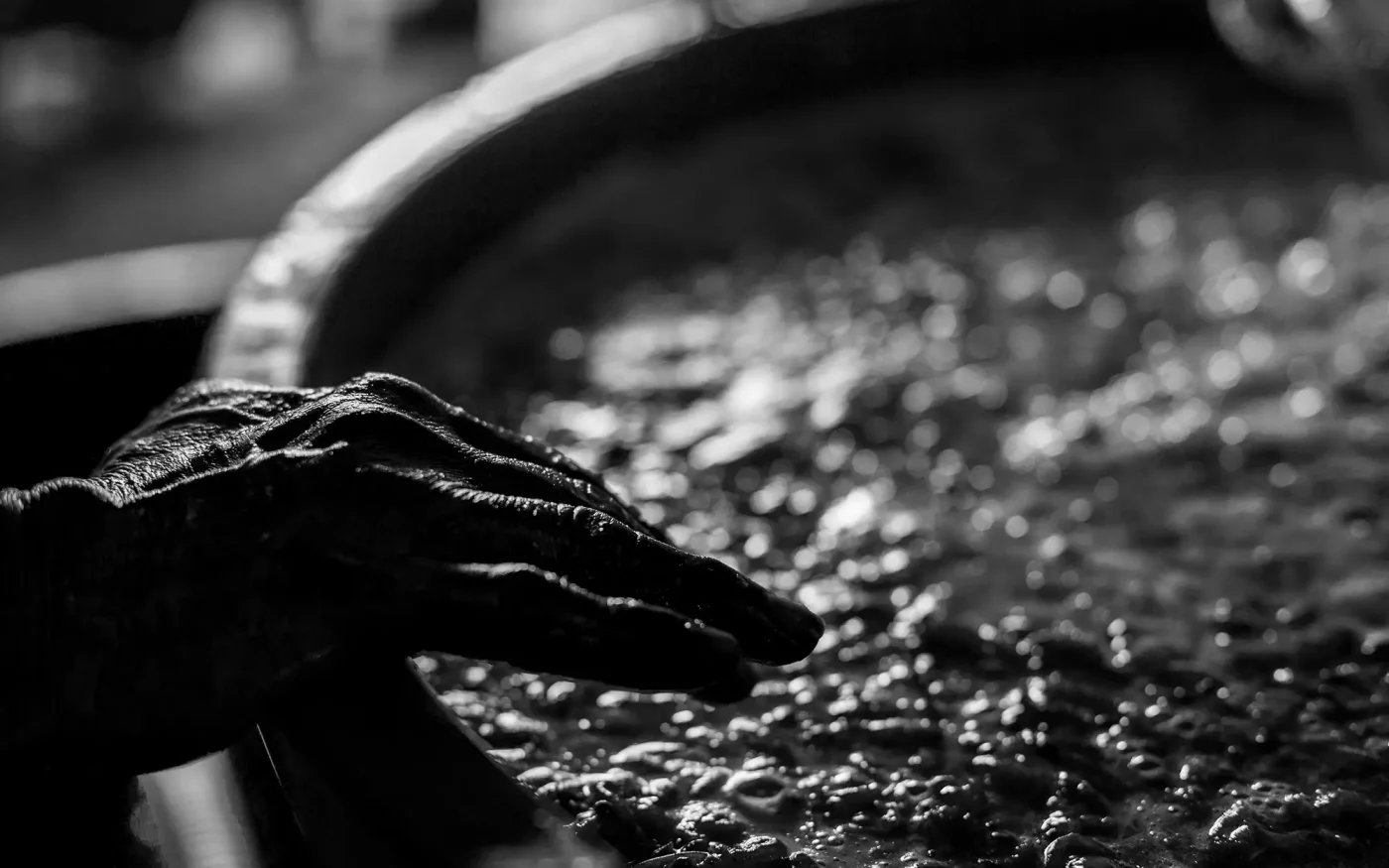
As with the wheat harvest, entire communities mobilized for the harvest, helping each other. The grape harvest was also a big topic of discussion: predictions, predictions, bets were made.
It was certainly the most important time of the year, the ultimate topical moment. Fatigue was shared, as were moments of joy. In all the farmsteads people worked and ate together until the last bunch was cut off. It would start at dawn and end at dusk. We would start out dressed in heavy jackets for the morning chill and end up in short sleeves with sweaty tank tops.
Today, the grape harvest-mechanized or entrusted to specialized cooperatives-is a pale reminder of what it once was: the most heartfelt and engaging collective ritual in the Langhe, the true watershed between misery and dignity in the year to come.
Toward the mountains, where the vine did not reach, life was certainly harder. The rows in the Langhe changed into chestnut groves, the bunches into currants and the cellars into stone scau (drying rooms).
Chestnuts, far less profitable than grapes, were just as essential, one of the very few energy sources that would last the winter. In the foothill areas, the cultivation of the chestnut tree-“the bread tree”-was so widespread that it created the so-called “chestnut civilizations,” a heritage of culinary traditions that forged the lives of entire generations.
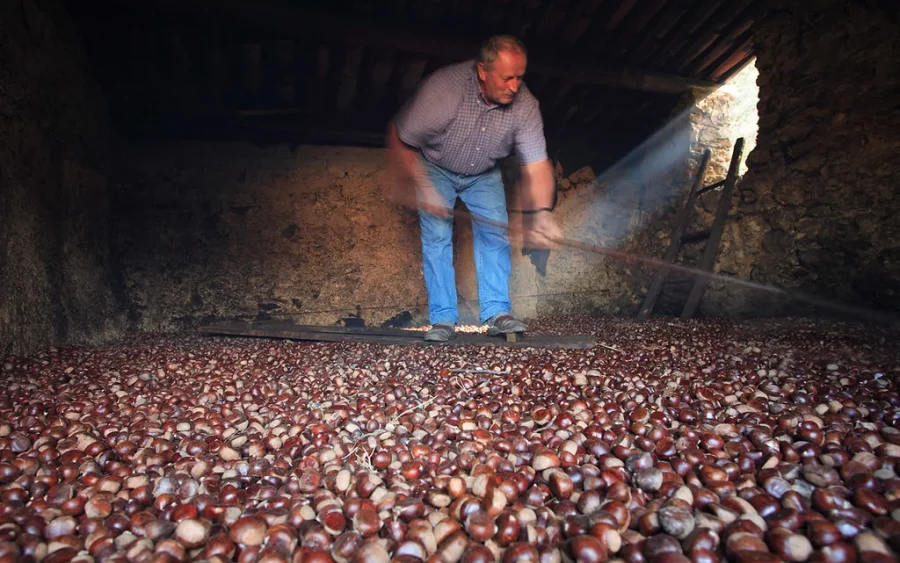
The chestnut was food, energy and life, the main livelihood of families during the cold season. It could be preserved by drying and consumed in the form of flour, cookies, bread, baked in milk. Chestnut leaves filled pillows and mattresses; they made the bedding for the stables; wood became furniture, doors, fixtures, roof beams and telephone poles.
Even today, in the Cebano (on the border between Alta Langa and Liguria) it is still possible to understand how important the chestnut was not only from the extent of the chestnut groves, but from the pervasive presence of the scau, the traditional direct-fire dryers built in stone.
Each family owned one: the chestnuts, resting on a trellis on the second floor, were slowly dried by smoke from a small fire that could stay burning for up to a month straight.
A gentle and progressive way to get rid of the fruit’s moisture and allow it a very long shelf life.
Like any truly valuable commodity produced by the countryside, truffles were the “possession” of peasants but the enjoyment of notables. As soon as it was uncovered, it was immediately sold to those who could shell out attractive sums for its scent.
However, time and money had to be invested in its collection: buying dogs, training them, going out at night in complete solitude. Above all, it was necessary to be the repositories of a traditional knowledge of very difficult access, almost esoteric, that is, to know the places of its collection, guarded by each seeker-the trifolao-with absolute zeal.
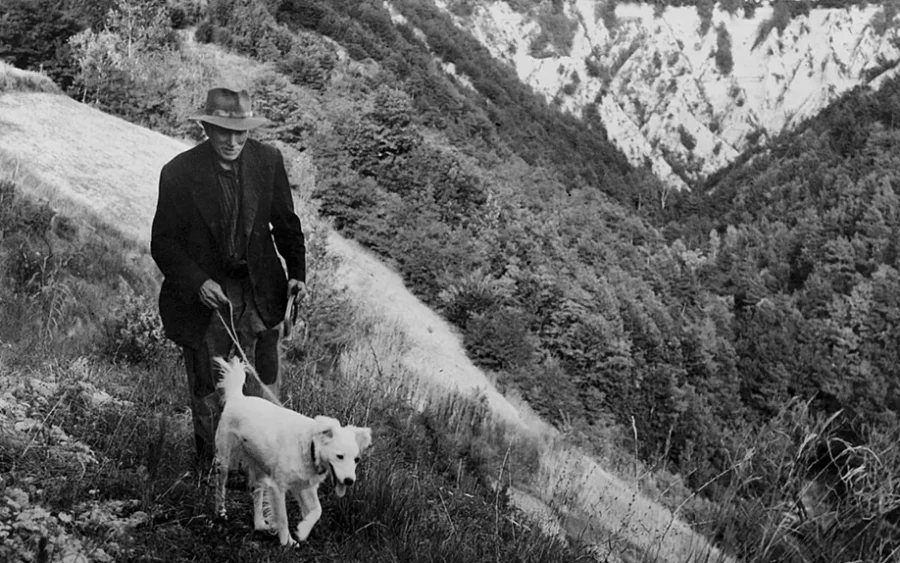
It is this aura of secrecy that helped create the myth of the “Mushroom King.” That, and the genius of Giacomo Morra, a postwar Albese restaurateur who, by giving truffles to the most famous celebrities of the 1950s and 1960s, turned them into a “cult object.” From underground protuberance to earth’s diamond.
Hazelnuts used to be grown mainly on the wild (and very poor) hills of the Alta Langa, that part of the Langhe, to be clear, which is headed by the municipality of Cortemilia and rises gradually toward the Ligurian Apennines. If at first it was used mainly in terms of self-consumption, it was from the postwar period that-thanks to the boom of the Albese confectionery industry (read “Ferrero”) it became gastronomic excellence and a very important source of income for the peasants of the poorer Langa.
Today the Tonda e Gentile delle Langhe (the most widespread cultivar) has become IGP Piedmont Hazelnut (Protected Geographical Indication) proving to be the best hazelnut for pastry, for making desserts (the famous hazelnut cake), for ice cream and–of course–for chocolate spreads.
Pumpkin represents the quintessential autumn vegetable. It does not require meticulous care, is hardy, can be used in many recipes and, under the right conditions, will keep for months. The peasant Langhe have always reserved an important place for pumpkin in their diet. The pumpkins could be emptied and used as containers, water bottles, lanterns.
The inhabitants of Piozzo, on the border of the western Langhe, were even called lapacuse (“pumpkin lappers”), as they used to fill dried pumpkins with wine to quench their thirst while working in the countryside.
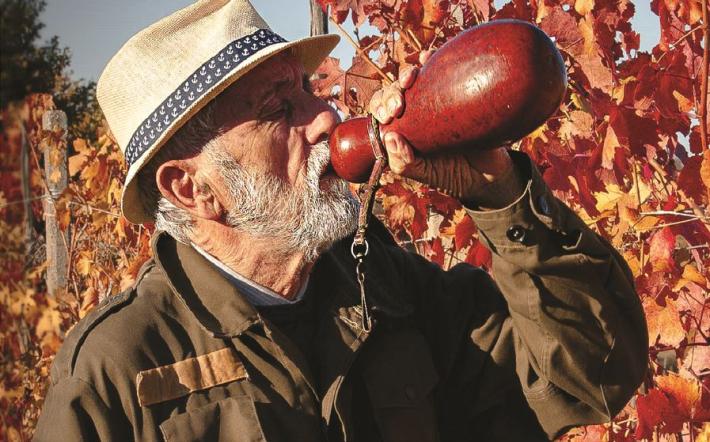
It is precisely in Piozzo that traditional pumpkin cultivation has found its greatest celebration. On the first weekend of October, Italy’s most important Pumpkin Fair takes place here, with hundreds of different varieties displayed in the town’s exhibition-market.
Autumn is abundance, but all waste is banished from peasant tables. Every leftover fruit finds its own method of preservation, every vegetable its own jar. It also happened this way for grapes not destined for wine production, transformed into sweet cognà, excellence born from waste. Somewhere between sauce and jam, the cognà was prepared with grape must, fruit and spices. All, simmered for indefinite amounts of hours until a sweet, viscous molasses is obtained.
Cognà ingredients (which change from country to country) include apples, hazelnuts, Madernassa pears, quinces, dried figs, and dried apricots. But also cloves, cinnamon, almonds, walnuts, hazelnuts. Sublime with cheeses, especially sheep and goat cheeses, excellent with boiled meats, cognà was autumn’s sweet farewell to the harsh discipline of winter.
